1. The creation of the Commandos

Lieutenant colonel Dudley Clarke, with 20 year of service in the British army, was
the founder of special units designed to carry out special missions behind enemy lines using
unconventional fighting methods. He was born in Transvaal, South Africa at the end of the
19th century. That was during the time doctor Leander Jameson, administrator of the British
South Africa Company decided to overthrow president Paul Krueger's legitimate government in
Transvaal. This coup attempt, which the British minister of colonies Joseph Chamberlain, as
well as the Prime Minister of the Cape Cecil Rhodes both knew of, ended on Jan 2, 1896 with
Jameson's capitulation and resulted in animosity between the British and the Boer and finally
led to the second Boer war.
It was the efficiency of these Boer commandos during the war and the guerrilla actions
of the highly mobile equestrian troops two years after the official end of the war that greatl
y inspired Clark. He learned that sabotage carried out by small but mobile groups of fighters
may, if not reverse the course of war, at least efficiently disrupt the infrastructure and
logistics of the enemy, engage some of their forces which might have been used elsewhere,
undermine the enemy's determination to continue fighting and disrupt morale. A relatively
small number of Boer commandos managed to tie-up about 250,000 British soldiers for months
at a time.
The creation of commando type units itself faced numerous obstacles and scepticism from
traditional British politicians and high-ranking officers. It was Sir Winston Churchill who
contributed to the final victory in the foundation of the Commandos. With his legendary
stoic serenity and matter-of-factness he withstood objections and obstacles and finally got
his way. The creation of highly mobile units utilizing unconventional fighting methods,
equipped with latest weapons and technology and whose members underwent extremely tough
training became a reality.
The first Commando parachute units were not the most successful, certainly not as
successful as their creators expected. Despite this, the initial failures were taken as a
source of valuable experience, thanks to which subsequent missions became legendary for the
allies and a true nightmare for the Axis generals.
2. Hitler's reaction
The extraordinary success of the Commandos' missions and their creation are
recognized in the reactions of Hitler himself, who said the following about the special
units:
1. Our enemies have been trying for some time now to conduct war using methods which
contradict the Geneva Convention on the rules of conducting war. Members of the Commandos
are extremely brutal and malicious and are composed of criminals. From the documents we
have seized it is clear that these individuals have orders not to take POWs and to kill
unarmed soldiers who pose an unnecessary burden to them or may inhibit them from carrying
out their missions. Orders requiring the killing of POWs were also found.
2. In compliance with the amendment to the military order issued on October 7, 1942,
which addressed this issue, Germany will apply the same methods in the future when fighting
these sabotage groups.
Whenever these commandos are encountered they shall be killed by German units.
3. Therefore I ordain the following:
As of today, each and every member of the Commandos attacking German units in Europe or
Africa shall be killed. This order shall be carried out regardless if these soldiers are
in uniform or saboteurs without uniform or identification. Whether they are fighting or
attempting to flee, whether they come by ship, plane or parachute. Even if they try to
surrender upon being discovered they will not be taken prisoner. All high-ranking officers
shall be informed about this order immediately.
4. Should the Commandos, such as agents, saboteurs etc be captured by the police or
civilians in occupied territories, they must be immediately handed over to the SD
authorities. They must not be put in military custody, they are not prisoners of war.
5. This order shall not apply to the treatment of those enemy soldiers who will be
taken as prisoners or surrender during combat. It is directed specifically at the commandos,
all other soldiers who are captured during military action on sea, soldiers shot-down in
aerial fighting, or those who surrender in battle will be treated as prisoners of war and be
placed in a POW camp.
6. I shall personally make liable all commanders and officers subject to military
jurisdiction for any omissions while carrying out this order, be it due to lack of
information from their subordinates or acting in contradiction with this order.
signed by A. Hitler
Arctic - Icy experience at Lofots:
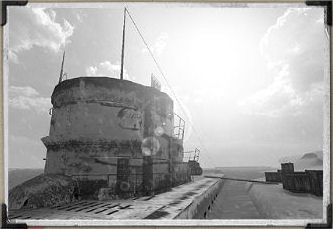
Far north, 1350 miles from the most important British naval base at Scapa Flow,
lies the archipelago Lofots which were occupied by the Germans during WWII. When the
Commando unit commanders learned they were to carry out a mission there they couldn't
understand until military planners and intelligence officials explained to them that these
islands are an important source of fish oil. The Reich uses this area to produce vital
nitro-glycerine and vitamins A and B, indispensable for submarine crews and the entire
Wehrmacht. The planned operation could also disrupt the German supply chain of fresh fish
and salt.
For the most part, the residents of the Lofots were adamant opponents of the occupying
force (mainly those whose property was confiscated, including fishing boats and industrial
fish processing plants) but there were also numerous German sympathisers. These people were
called the Quislings, nicknamed after Vidkun Quisling, the PM in the collaborationist
government in Oslo.
The mission was certainly not simple and transport to the area proved to be the first
problem. The men were supposed to be transported aboard two royal navy ships but the ships
were in danger from patrolling German submarines, the famous U-boots. It took two cruisers
and five torpedo boats to cover the Commandos' voyage as well as the submarine Sunfish and
HMS Nelson and HMS King George V. While stormy whether out to sea made the going difficult
it also helped the British. Few German planes were able to fly in the bad whether, the
Luftwaffe's activities were limited solely to reconnaissance flights three times a week by
unarmed transport Ju-52 Junkers. In addition, according to the intelligence reports, only
small enemy resistance was to be expected. The Germans simply didn't take into consideration
the possibility of being attacked in this remote area.
The beginning of the mission went surprisingly smoothly, the invasion fleet met
resistance only from a single German vessel which was promptly sunk.. A brief discussion
with some Norwegian patriots right after they landed, disclosed that there were very few
soldiers in the town, just a few Gestapo agents. The landing went so smoothly that the
locals didn't even know the commandos had arrived.
The Commandos rushed to carry out their missions. Some of them seized the post office
where one of the soldiers, lieutenant R. L. Wills, got a kick out of sending a telegram with the following message:
IN YOUR LAST SPEECH YOU SAID THAT NO MATTER WHERE THE ENGLISH GO, THEY WILL ALWAYS BE MET BY
GERMAN SOLDIERS STOP WHERE ARE THEY STOP LTN. WILLS
The addressee was: Adolf Hitler, Berlin.
The Commandos in the meantime seized boats and set them on fire in the Brettesnes port
while in Svolvaer they destroyed factories and refineries. The objective of this mission was
to destroy everything the enemy might be able to use in the Lofots. The result was more than
satisfactory. In addition, over 300 Norwegian volunteers returned with them to England and
joined the ranks of the Norwegian exile army. Commando Unit Four also captured 216 men,
mainly the underground Luftwaffe staff and local collaborators. The navy sank 11 ships,
manned several vessels with their own crew or dragged them back to England. They destroyed
fuel storages, refineries and factories.
Following this first of two attacks on the Lofots the Germans reinforced the defence of
the islands and in retaliation burned down several houses in the village."
Africa
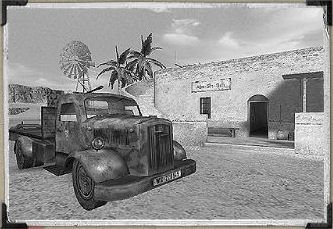
Little was known about the commando units before their missions in north of Africa.
Their members along with the LRDG soldiers (Long Range Desert Group - a special assault
group created for desert operations) inflicted significant damage to German-Italian airports,
bases and important transportation routes throughout Africa. The attack on the Bardiya port
was one of their first missions. Because it was beyond the reach of the allied air forces
the Commando units were chosen to carry it out.
The men of A battalion from Commando Unit Seven were chosen for the attack. The
battalion boarded the HMS Glengyle and accompanied by one anti-air craft cruiser and three
Australian torpedo boats headed towards its destination. Several miles from Bardiya they
were met by the British submarine Triumph, whose crew was to take charge of the navigation
and if necessary to function as operating reserves.
Because the mission was top secret there was a risk that the submarine could be targeted
by the royal navy who had no idea that the Triumph was operating in the area. In the end,
the planes with the blue-white-red cockades did not attack the Triumph but the confusion did
cause a significant delay.
In addition there was a problem with the boat itself and the eventual landing was utterly
chaotic. Individual units were dropped off in dinghies in sectors which were originally
assigned to other units, or were outside of the target area completely. The intelligence
service also failed miserably. The Commandos encountered resistance in areas where no
defence was expected and met no resistance or just a few enemy patrols where strong
resistance was expected. Despite the confusion and chaos the Commandos killed or injured
about fifty Italians, set some 25 vehicles on fire, blew up several buildings of the coastal
fortification, after which they retreated to the beaches where they were evacuated."
Another mission which could have and should have altered the course of the WWII was
the kidnapping of marshal Erwin Rommel, who was both admired and feared by the allies for his
extraordinary abilities as commander and success in battle. This veteran of the French war
and proponent of mechanized tank warfare was nicknamed "the Desert Fox". According to
British intelligence, Rommel was believed to be in Kyrenaika Libya near a place called Beda
Littoria. The Commandos boarded two submarines: the Torbay and Talisman. The men from the
Torbay landed first, they seized the coast and carried out area reconnaissance. The Talisman
crew wasn't nearly as lucky, only 8 of the men managed to reach the coast.
The mission was a complete fiasco. The building the soldiers thought Rommel would be in
turned out to be the main headquarters of the German and Italian supply units. When the
commandos tried to get back to the sub they were attacked and outnumbered by the Germans as
they went. The weather stopped them from getting to the sub immediately and they lost many
men to the Germans and their Bedouin allies.
The creation of SAS:
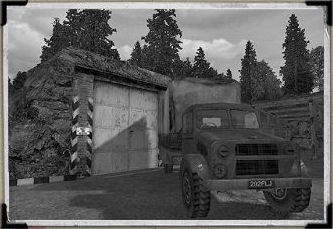

Just as with many other significant events, this too was a matter of coincidence -
and error. David Stirling met Jock Lewis from Commando Unit 8 in Africa who had a shipment
of parachutes at his disposal, which, thanks to an administrative error, were transported to
Alexandria. They both agreed to take advantage of this lucky coincidence and to try to train
a unit which would be able to work within the enemy's territory. They borrowed a military
transport aircraft at the Marsa Matruh airport and took off for their first parachute
mission. When it was Stirling's turn, his parachute opened too early and the silk got
tangled up in the tail of the plane. After attempting to try to free himself, the chute
fabric ripped and Stirling fell. He survived the fall. While in hospital, Stirling obsessed
about his idea and began to make plans for attacking German and Italian posts, constantly
studying the map of the Libyan desert and contemplating new strategies and possibilities for
missions.
Following his release from hospital, Stirling contacted the Middle East headquarters in
Cairo with his plans. Neil Ritchie, the commander's deputy was very enthusiastic about his
plan. Stirling got an immediate promotion to captain and received orders to gather a group
of six officers and sixty men, all volunteers, and bring them to the Suez Straights where
they would undergo intense training. The volunteers were promptly found and the training
took place near Kabrit. The first task ahead of this newly created unit was the sudden and
unexpected sabotage of German airports, with the objective of putting them out of operation
before a planned offensive in northern Africa. The unit went into this mission under their
new name: SAS - Special Air Service.
Jock Lewis in the meantime developed a highly explosive bomb especially designed to
eliminate aircraft on their stand at airports under attack. Although this bomb brought great
results for some time, there were numerous cases when the detonator mechanism failed. Thus
the SAS units resumed traditional methods of destroying planes. Following the first
unsuccessful mission, the regiment established closer ties with the LRDG. Later, the SAS
units in Africa were used at enemy airports to destroy fuel and ammunition storages. The
legendary Willis Jeep, modified by the SAS, proved to be very useful for these missions. The
SAS members mounted the highly efficient Vickers machine guns on their jeeps.
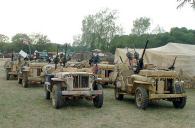
Normandy: The Overlord Mission
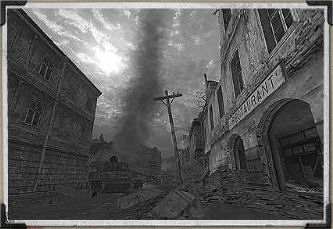
The assault on the French coast was a result of two years of intense training and
preparation. In August 1943 Churchill, Roosevelt and the chiefs of staff chose Normandy as a
suitable spot for the landing. Simultaneously the allies launched a misinformation campaign
with the aim of convincing the enemy that the upcoming invasion would take place in Pas de
Calais. The misinformation campaign included a large number of misleading manoeuvres, the
building of dummy bases on the English coast, misleading fleet transfers and the use of
simple ship models in British rivers. The landing itself took place on June 6, 1944 on the
coast of Normandy between Cherbourg and Le Havre. The beaches where they landed were each
given a name and they became enshrined in history: Utah, Omaha, Gold, Juno and Sword. The
British units were to land at the Gold and Sword beaches. At this stage of the war, the
Commando's missions did not have the same purpose as when they were founded, a time when
they were essentially the only option for the allies to attack the enemy within Europe. But
the type of tasks these soldiers carried out did not change. They were still given the most
difficult and dangerous missions. In Normandy too, the Commandos attacked in the first wave,
they eliminated hard-to-access coastal batteries and hidden machine gun perches, cleaned
residential areas where heavy weapons couldn't be used because of snipers and surveyed mine
fields, marking the way for the advancing units, all under heavy enemy fire. The soldiers
did not stop, regardless of how dangerous it got and completed their orders, often under the
most hazardous conditions, before slowing down, 83 days into their exhausting campaign. Just
17 hours after the H hour and D-day, the allies had 132,750 men and approximately 6,000
tanks and cannons on European soil. The Overlord mission's success significantly influenced
the course of the WWII and the special units' men contributed to the final victory.
Burma: Tropical hell
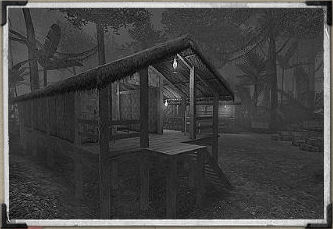
The Commandos were not prepared for their Asian campaign. The volatile weather,
temperatures of 40 C in the shade, the humid and unwelcoming jungle - these were all
obstacles that had to be overcome. The men from the special units had previously fought in
all types of climates, against a greater enemy and thought they were ready for anything.
That was until they met the Japanese soldiers. They ran into the Japanese for the first time
in the jungle near the Arakan Joma mountain range which extends between central Burma and
the Bengal Bay.
While Germany and Italy were close to defeat and nobody believed they could win the war,
the Japanese seemed to get stronger with every loss. The worse their losses were the more
furious and brutal the fanatical Japanese soldiers became. The allies found it difficult to
cope with warfare on Asian soil. The Japanese, bound to the bushido code, didn't recognise
words such as "loss" or "POW". Time and time again after they had exhausted all their
possibilities, they would throw themselves onto allied tanks with grenades strapped to their
bodies, or would charge the machine gun posts with their samurai swords drawn. When they
had no ammunition left, they made do with bamboo spears or stones. They chose suicide with
their last grenade over being taken as a POW. It was a new fanaticism that the allies hadn't
experienced before and they had to learn quickly how to deal with it.
The Commandos landed in this area on March 11, 1944. Despite the use of heavy weapons,
many of them died during the landing. However, as soon as they took control of the coast
they kept advancing. It was a long and miserable road before the Japanese suffered their
final blow and the war in Asia was ended by the dropping of two atomic bombs - one over
Hiroshima and one over Nagasaki.
End of Historical backgrounds